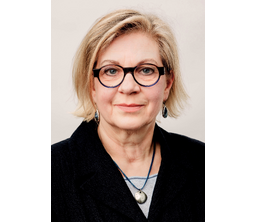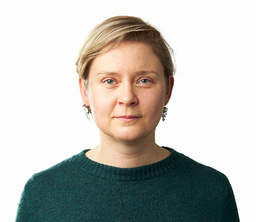New findings on the Romanesque door of the St. Maria im Kapitol church
The international and interdisciplinary research colloquium was held at the Cologne Institute of Conservation Sciences in the Südstadt district of Cologne between Thursday, October 21st and Saturday, October 23rd 2021. In total, 170 people throughout Europe and from the USA registered for virtual participation. Around 20 participants attended in person together with the speakers.
Introduction
Prof. Dr. Klaus Becker, vice president for research and knowledge transfer of the Cologne University of Applied Sciences, opened the conference reflecting on the differences between inter- and transdisciplinarity as well as on the special need for cross-linking the different disciplines for research purposes. Matthias Schnegg, the pastor of St. Maria im Kapitol, expressed his joy and deep respect for the commitment to the intense exploration of the doors. He focused particularly on the relevance of a reflective historical awareness for people across every generation.
At a Glance
| Category | Description |
|---|---|
| Research project | New findings on the Romanesque door of the St. Maria im Kapitol church |
| Management | Prof. Dr. Regina Urbanelk |
| Faculty | Faculty of Cultural Sciences |
| Institute | CICS - Cologne Institute of Conservation Sciences |
| Persons involved | Theresa Neuhoff MA, Sarah Grimberg MA |
| Sponsors | Fritz Thyssen Stiftung |
| Duration | still open |
Jump to
Gallery
 0 / 0
0 / 0
The first relief on the left wing combines two scenes: On the left the Annunciation with the angel Gabriel and Mary and on the right the Visitation, where Mary greets Elisabeth. A female figure in the middle separates both scenes. (Image: TH Köln, Hanna Freres)
 0 / 0
0 / 0
The digital reconstruction of the first color program (around 1065) illustrates that it combined various shades of pink, orange, green and brown. (Image: TH Köln, Sarah Grimberg)
 0 / 0
0 / 0
The second color program differs clearly from the first as it is dominated by shades of red and blue. In addition, the graphic design of some areas is remarkable. (Image: TH Köln, Sarah Grimberg)
 0 / 0
0 / 0
The reliefs of the second row of the right wing show the healing of a blind man on the left and the ressurection of Lazarus on the right. (Image: TH Köln, Hanna Freres)
 0 / 0
0 / 0
The direct comparison of both color programs reveals the differences: While the first is dominated by carefully nuanced shades of orange, green and brown, the later on the right shows strong tones of red and blue, additionally shaped by painted drapery. (Image: TH Köln, Sarah Grimberg)
Recent research and the object’s history
The first, short presentation was intended to introduce the topic of the conference and to prepare participants for the presentation of recent research results. For this purpose, Regina Urbanek presented essential historical data on the construction of the former convent in the eleventh century and gave a brief overview of recent research and the object’s history highlighting central debates.
In her presentation, Theresa Neuhoff examined the object’s history during World War II. Her extensive research helped to clarify the whereabouts of the doors during this period. She also presented her current research on the circumstances surrounding the documentation of the door’s polychromy by Agnes Schulz in 1944 in the Marienstatt Abbey.
Regina Urbanek then presented the results of the work’s comprehensive technological examination, in particular that of the two Romanesque programs of polychromy. She presented extensive new scientific findings, especially concerning the door’s original color programs. She concluded her presentation with the thesis that the two polychrome phases and the restructuring phase could not have been executed at an interval of 16 years as postulated so far. Instead, it must be assumed that the second version was created in the mid-twelfth century, due to various similarities with contemporary sculptures. Elisabeth Jägers gave an overview of the pigments and binders used. One focus of her presentation was on new findings, their evidence and on the importance for the state of art-technological research on the period when the doors were created.
Key topic “colour”
The third session on Friday dealt with the door’s local context. Joachim Oepen not only introduced the archbishops and the cultural landscape of the regions around the Rhine during the 12th century, he also considered the foundation’s relationships with the citizens of Cologne and their possible role as donors. He ended the presentation with the question of how the church and its entrances were used by the clergy and the city’s citizens.
The presentation of Johanna Beutner addressed the question of the extent to which St. Maria im Kapitol was an exceptional case compared to other urban convents. She pointed to the convent’s unique triconch architecture as well as its direct jurisdiction by the bishop. Furthermore, the position of the abbey within the liturgical topography of the city is quite unique.
Key topic “style”
The Friday morning session dealt with the topic of style. Manuela Beer opened the session by reflecting on if and how sculpted elements of the door’s reliefs could be related to the production of sculptures in Cologne during the 11th century. In comparison with the preserved and heterogeneous groups of works that could definitively be located to the Cologne area, a clear relation to the Kapitol door could not be determined. A precise determination of the time of origin is also not possible because of the same problem.
Ursula Prinz explored the ornaments of the carved interlace boards, a topic which has so far not been studied. She provided for the first time a complete analysis of the different types of ornaments and was able to prove evident insular influences as well as a use of motifs from the Carolingian book-painting.
Key topic “iconology and construction”
The second session had iconology and construction as its focus and main subject. Based on extensive archival material, Ulrich Knapp presented the current state of knowledge concerning the architectural history of St. Maria im Kapitol during the 11th century and the reconstruction of the church after World War II. His research confirmed that the door was originally installed at the entrance to the northern conch. The question of whether this was the door’s intended position from the start of construction remains open since the triconch was constructed after a change of plan due to a sagging of the base-plate in the church’s eastern part.
Klaus Gereon Beuckers determined a terminus ante quem for the dating of the reliefs. As in his previous research, he referred to the numerous scenes depicting Herod. Each of these scenes shows Herod as a secular ruler represented negatively as opposed to the ideal ruler of Christ in the Passion. In Beuckers’s view, these depictions refer to the extreme tensions between church and empire that were settled in 1049 and thereafter became obsolete.
By examining a number of doors, mainly of Anglo-Saxon and Romanesque origin, Tina Bawden studied the function and the meaning of the door’s metal fittings in relation to the function of the threshold.
Key topic “Local context”
The third session on Friday dealt with the door’s local context. Joachim Oepen not only introduced the archbishops and the cultural landscape of the regions around the Rhine during the 12th century, he also considered the foundation’s relationships with the citizens of Cologne and their possible role as donors. He ended the presentation with the question of how the church and its entrances were used by the clergy and the city’s citizens.
The presentation of Johanna Beutner addressed the question of the extent to which St. Maria im Kapitol was an exceptional case compared to other urban convents. She pointed to the convent’s unique triconch architecture as well as its direct jurisdiction by the bishop. Furthermore, the position of the abbey within the liturgical topography of the city is quite unique.
Key topic “European context”
The session on European context that was held on Saturday morning featured three colleagues from abroad. Katherine Werwie began by examining written descriptions of the door of Solomon’s Temple. She referred to the theological understanding of the door in early Christianity, considering the model established by the doors of Santa Sabina in Rome. Finally, she drew detailed comparisons with the sculpted wooden doors in Split, Carsoli and Le Puy to examine the position of the Kapitol doors in their broader European context.
Zana Matulic Bilac presented her comprehensive findings on the construction of the doors of the Cathedral of Split that were created by the Croatian sculptor and painter Andrija Buvina. These findings were the result of conservation and technical study she recently performed on the doors.
Kaja Kollandsrud examined the aesthetic effects the creators of medieval artworks sought to produce. This research was based in both written sources and reconstructed contexts of sculptures, panel painting and retables. In particular, Kollandsrud reconstructed the visual impact of objects in their original contexts under different lighting conditions.
Outlook
In summary, the proposed new dating of the door’s second version to the second half of the 12th century was generally accepted. An epigraphical analysis of the tituli by Helga Giersiepen will follow.
Following the last session, nearly all speakers participated in an excursion to St. Maria im Kapitol. Thus, the participants had the opportunity to take a close look at the church and to discuss the theses of the conference directly in front of the object. Finally, the group discussed the planned publication of the conference and all participants agreed on a preliminary schedule.
All contributions to the conference will be published in a conference transcript. In addition, a catalogue section about the door will be created with detailed information about all technical findings. We intend to publish an English translation of all contributions so that international colleagues will have easier access to the findings.




